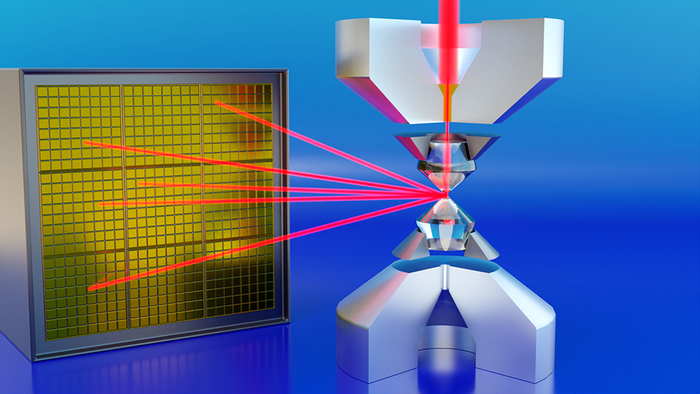For decades, scientists sought a way to apply the outstanding analytical capabilities of neutrons to materials under pressures approaching those surrounding the Earth’s core. These extreme pressures can rearrange a material’s atoms, potentially resulting in interesting new properties.

Credit: Jill Hemman/ORNL, U.S. Dept. of Energy
For decades, scientists sought a way to apply the outstanding analytical capabilities of neutrons to materials under pressures approaching those surrounding the Earth’s core. These extreme pressures can rearrange a material’s atoms, potentially resulting in interesting new properties.
A breakthrough resulted in 2022 when researchers at Oak Ridge National Laboratory’s Spallation Neutron Source squeezed a tiny sample of material – sandwiched between two diamonds – to a record 1.2 million times the average air pressure at sea level, or approximately 1.2 megabar.
But this was only the start — they still had to produce useful data from the experiments.
Now those same scientists have implemented software that removes the signal interference affecting the neutrons as they pass through the diamonds before reaching the sample.
“Researchers can now perform neutron experiments beyond 1.0 megabar and extract accurate data about extraordinary atomic structures of materials,” said Malcolm Guthrie, computational instrument scientist at ORNL’s SNAP beamline.
UT-Battelle manages ORNL for DOE’s Office of Science, the single largest supporter of basic research in the physical sciences in the United States. DOE’s Office of Science is working to address some of the most pressing challenges of our time. For more information, visit energy.gov/science.
Journal
Scientific Reports
DOI
10.1038/s41598-023-31295-3
Article Title
Advancing neutron diffraction for accurate structural measurement of light elements at megabar pressures
Article Publication Date
23-Mar-2023




